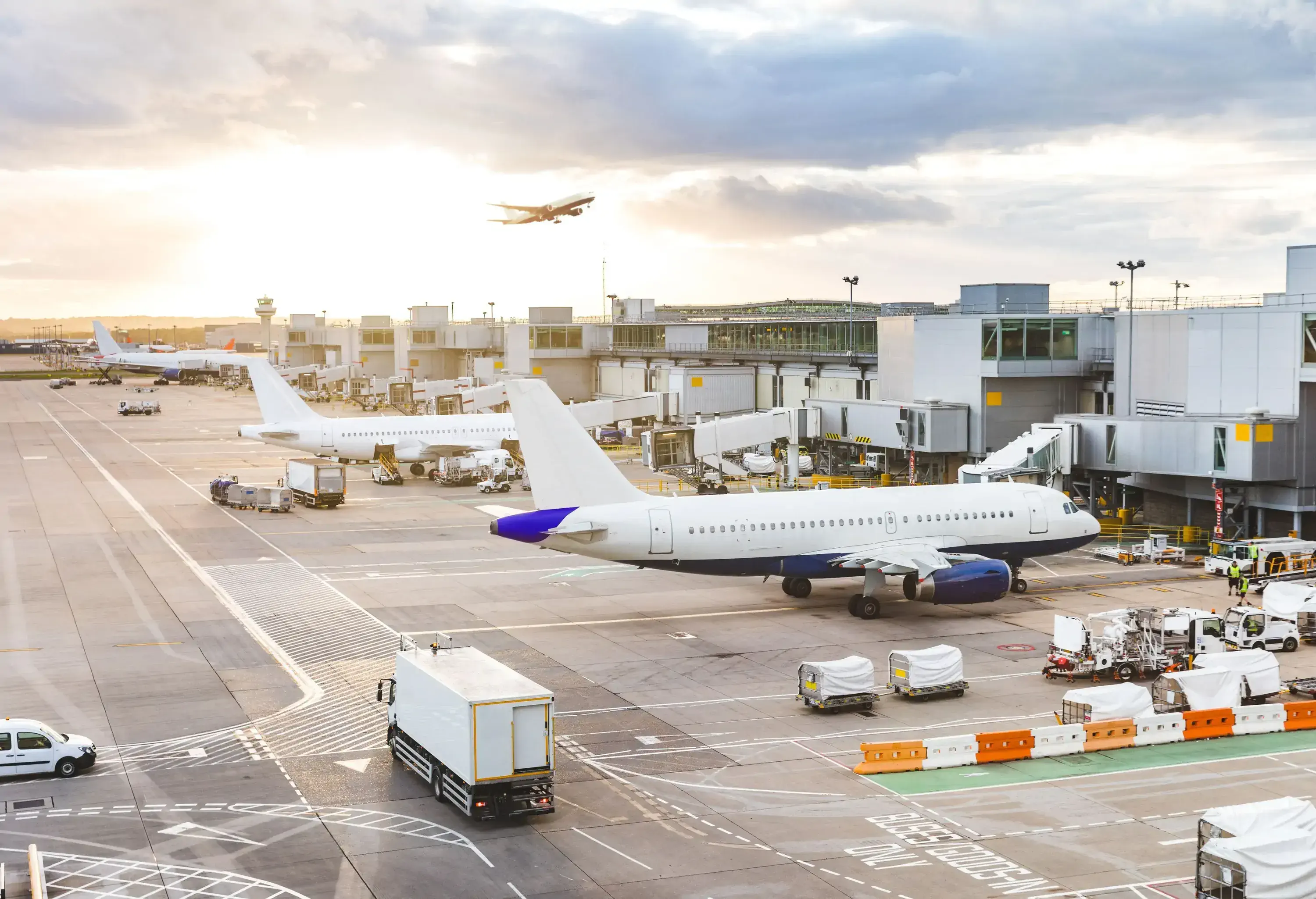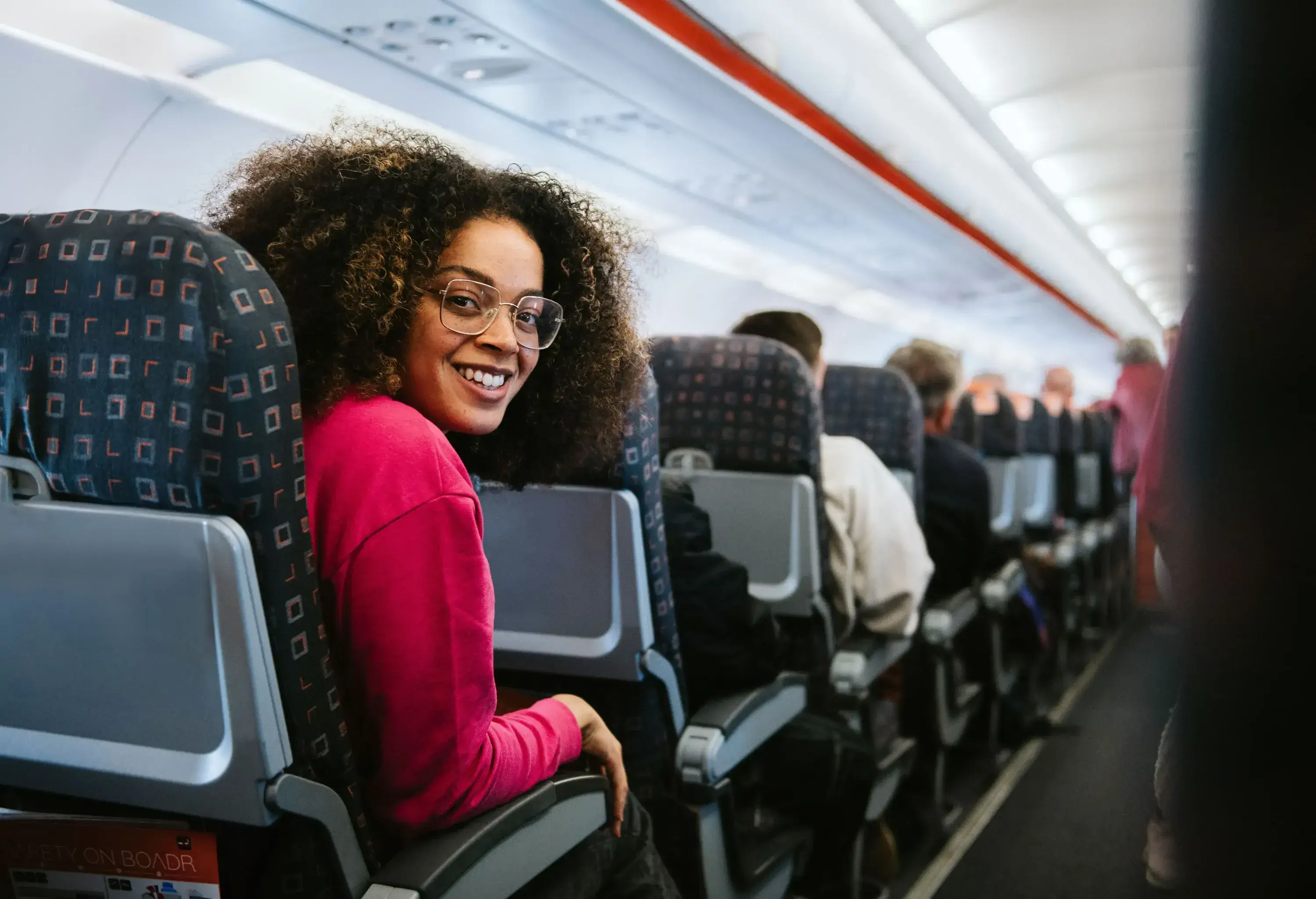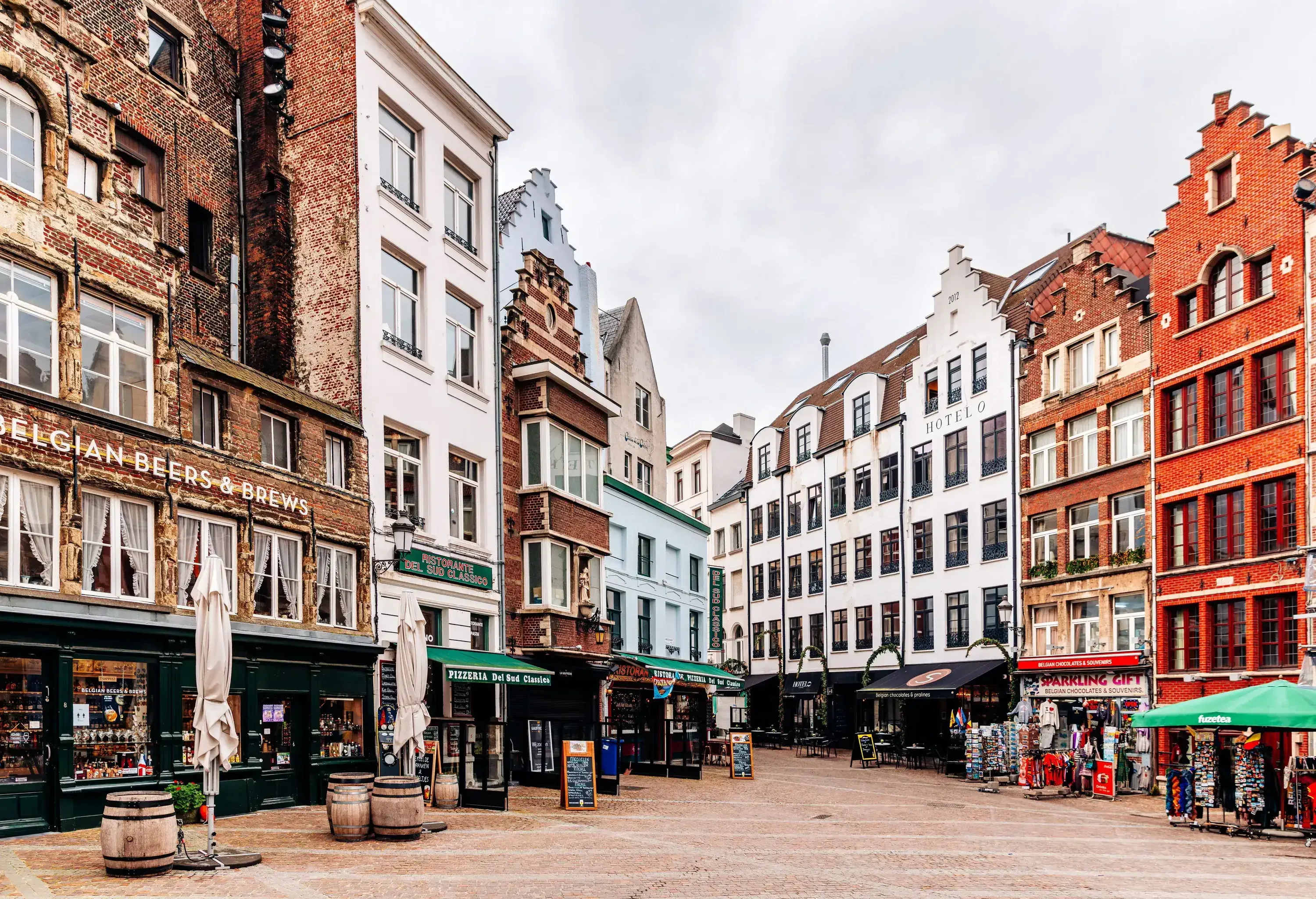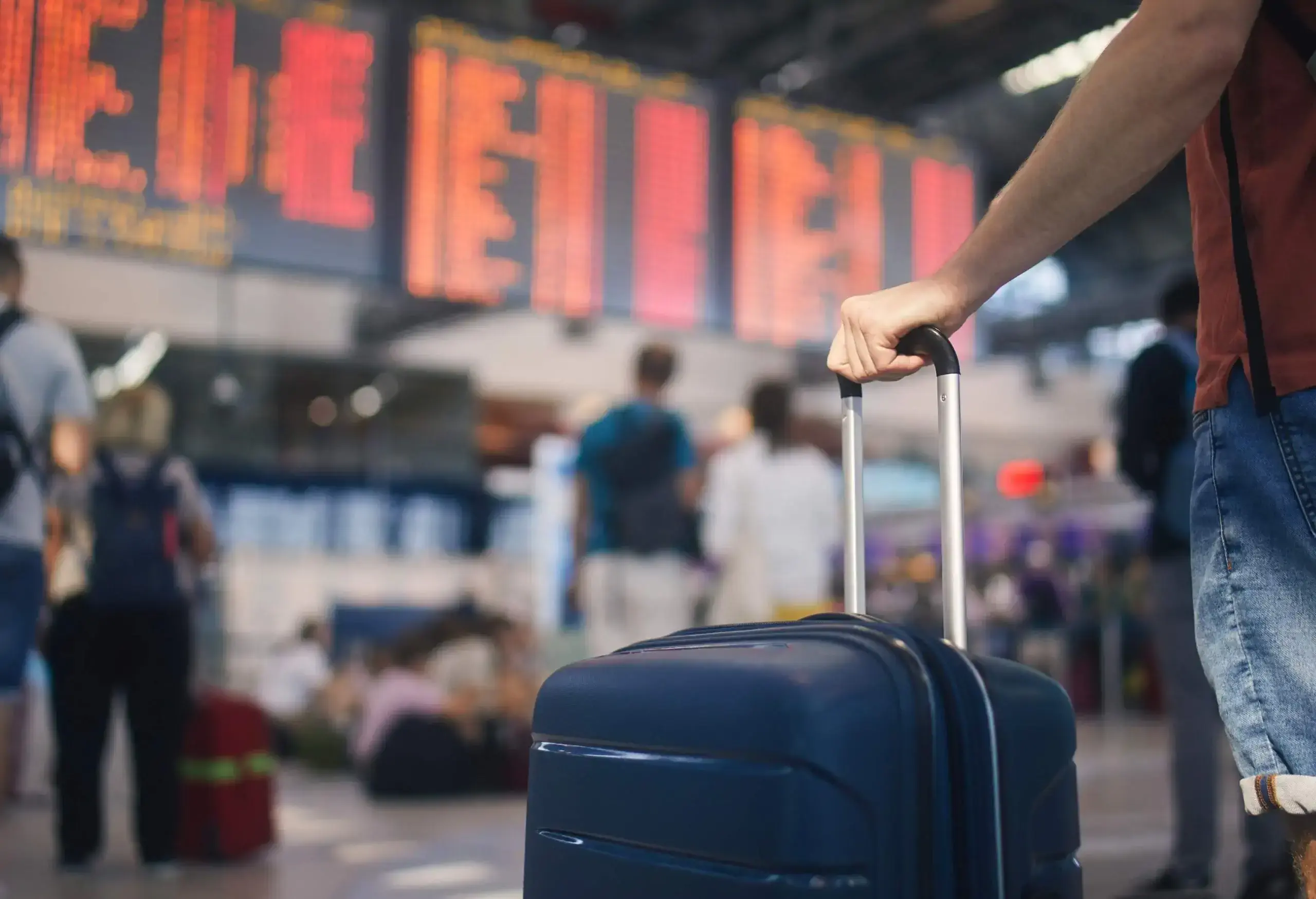As a frequent traveller based in Amsterdam, I have become well-versed in flying with cheap airlines in Europe. These low-cost carriers (and there are many!) offer a budget-friendly way to experience popular and lesser-known destinations across the continent for less than what you’d pay with a legacy airline.
It’s by no means luxury, but since flights rarely exceed three hours, the lower prices make up for the no-frills experience. If you’re new to flying with cheap European airlines, you (like me) may have noticed some extras (fare tiers and baggage costs, for example) that can be notoriously confusing.
Below, I share tips and insights I’ve learned over the years. Hopefully, they’ll help make your experience on a budget European carrier as smooth as possible.
Which is the cheapest airline to fly? An overview
Budget airlines in Europe offer a pared-down experience, plus plenty of surplus fees that can easily add up. Here’s what to expect and an overview of the cheapest airlines to fly with in Europe. Prices in the below table are based on average prices found by KAYAK users, and are subject to change.
My top picks for cheap airlines in Europe

There are so many low-cost airlines in Europe (which is great for travellers, as competition keeps prices in check) that I haven’t flown them all. However, here are a few to consider.
Ryanair, average cost £138
Ryanair paved the way for cheap European airlines when it was founded in 1984 – and it’s been going strong ever since. With operational hubs in Dublin and London, Ryanair serves more than 230 airports across 37 countries, mostly in Europe.
I’ve flown Ryanair many times, and while my experiences have been mixed, it’s hard to beat its prices (keep an eye out for sales, which offer even better deals). And I especially like its cheeky branding.
Money-saving tips: Don’t even think about passing off your overstuffed duffel as an underseat bag, lest you get hit with the approximately £60 you’ll pay for a cabin bag deemed too big or heavy. And Ryanair staffers are more incentivised than ever to spot crafty, rule-bending customers, as they receive a per-bag bonus that’s just been increased. I’ve also seen more than one passenger get slapped with fees for airport check-in (around £55).
easyJet, average cost £191
Featuring a distinct orange-and-white livery, easyJet is a popular pick among budget travelers. Its large network – 355 aircraft that service 1,207 routes across 38 countries and 164 airports – makes it a cinch to access tourist destinations in Europe and North Africa. It’s based at London Luton Airport, with other main hubs in Milan Malpensa and Geneva.
Money-saving tips: easyJet Plus is a membership program that can quickly pay for itself if you fly a lot. The annual fee (which is currently around £249) comes with perks including dedicated bag drop, priority boarding, free seat selection, and priority security access at participating airports, plus discounts for on-board dining. It’s good value if you fly often and I’ve had a membership for several years.
Vueling, average cost £178
This Barcelona-based carrier differs from most budget airlines in that it’s part of International Airlines Group (IAG), which also includes British Airways and Iberia. That’s good news for passengers, because it means you can book connecting flights to some major European hubs, including Paris Orly and Rome airports, using Vueling’s partner airlines.
I’ve flown Vueling several times, and I’ve found it to be one of the better cheap European airlines. When I had an issue with my son’s boarding pass, customer service was prompt and friendly – with no extra fees. I also enjoy the Spanish menu onboard (especially the surprisingly tasty tortilla español).
Money-saving tips: For budget long-haul flights, consider Vueling Global, a venture with partner provider Dohop. The offering creates wallet-friendly long-haul connections via a range of secondary airlines around the world. It’s best for travellers with carry-on luggage only, since it involves self-transfers (meaning you’ll need to manage any checked luggage yourself). However, it does include guarantees if you miss a connection, which can be a handy safeguard against unforeseen rebooking expenses.
Hidden costs — and how to avoid them
Baggage fees
A general rule of thumb: It’s almost always cheaper to pay for baggage, whether it’s carry-on or checked, during the booking process. And be sure to follow the restrictions for size and weight: low cost airlines really do use those baggage sizers in gate areas.
- How to avoid: Be sure your bag complies with the dimensions and weight restrictions, or you may face a big fee to place it in the cargo hold. (To use a handy bag measurement tool, download the KAYAK App.)
Seat selection fees
You can usually choose to pay to choose a seat, and more for seats in aisles, windows, exit rows or toward the front of the plane.
- How to avoid tip 1: Some carriers, including easyJet, make an effort to sit children close to an adult. But you’ll increase your chances of sitting together if you check in as soon as possible (for easyJet, that’s a full 30 days before the flight).
- How to avoid tip 2: For other carriers, including Ryanair, another strategy if you’re travelling with someone is for one of you to take whatever random seat is allocated for free. Then, the other passenger can pay for an available adjacent seat — that way, you only have to pay one fee. (However, this isn’t always possible.)
- How to avoid tip 3: Solo travellers can wait to check in until the last minute, when they might be randomly allocated a higher-priced seat, such as an exit row, that hasn’t been sold.
Airport check-in and boarding pass printing fees
Many budget airlines will charge you if you arrive at the airport without your boarding pass.
- How to avoid: If you haven’t already, download the airline’s app and check in online.
Infant fees
Children under two years old don’t need their own ticket. But some carriers, including easyJet and Ryanair, do require an “infant fee” of about £25 (even though your baby will sit on your lap).
- How to avoid: Before you book, check the airline’s policy carefully for these sneaky infant fees. If there are, consider similar costs on alternate airlines and choose the one that works best for you.
How can low-cost airlines operate so cheaply?

Budget carriers in Europe tend to offer no frills. These differences are generally what make them cheaper to fly with:
| Low staff numbers | LCCs in Europe tend to have fewer staff than traditional carriers. As a result, they rely on apps to handle booking, seat selection, and boarding passes. What that means for you: fewer opportunities to interact with an agent if you have a question. (Speaking to a customer service rep on the phone may incur a fee, too.) |
| Limited on-board WiFi | Most cheap European airlines do not offer WiFi. If it is available, you can expect to pay for it. So stock up on reading material and make sure you have plenty of entertainment downloaded on your (charged) device. |
| More walking at the airport | Many low-cost airlines are allocated in less desirable (i.e., more cost-effective for them) terminals and gates, which means you may have to walk farther to reach them. Once you’re there, don’t expect much. Depending on the airline and airport, there may not be much seating or facilities. |
| A pared back boarding process | Expect to navigate lines and crowding as gate agents check your passport and baggage allowance. |
5 insider tips for booking with cheap airlines in Europe

It can take some trial and error to get the hang of booking with low-cost airlines in Europe. Below are the tips I’ve learned to streamline the process and save money.
- Snag low fares fast. Rock bottom prices are entirely the point of flying with cheap European airlines. But, as always, the best deals go quickly, so don’t wait to book. You can set a KAYAK Price Alert for an easy way to monitor prices.
- Understand what’s included with your fare. LCCs’ pricing models – fare categories, inclusions, restrictions – can be very confusing. If you’re searching on KAYAK, you’ll see all fare options and what’s included (baggage allowance, for example) once you click your chosen route.
- Confirm the currency. Low-cost airlines in Europe usually list prices in euros or pounds sterling, depending on the country where they’re based. Double-check the cost in each currency, depending on the current exchange rate you may get a better deal.
- Double-check departure and arrival airports. Some budget airlines in Europe use smaller regional airports (easyJet, for example, uses both London Gatwick and Luton). I have heard several stories of passengers being confused upon arrival, so to avoid that potentially costly mistake, both time- and money-wise, confirm departure and arrival airports and plan transit accordingly. (In other words, that £50 fare might not be such a good deal if the only way to reach the airport is with an exorbitant cab ride.)
- Download the airline app ASAP. Cheap airlines in Europe try to steer passengers toward using their app at every turn. The sooner you get used to using it, the smoother (and cheaper) your experience will be. If you book with an OTA or metasearch like KAYAK, all you need is your booking reference to add your flights and boarding info to the airline’s app.
Recommended destinations to visit via a low-cost European airline

It’s easier than ever to explore Europe on a budget, thanks to numerous low-cost carriers that service the continent (and beyond). Here are a few recommended destinations.
- Antwerp, Belgium: This Belgian port city is a global fashion hub and an excellent culinary destination, with more than two dozen Michelin-starred restaurants and countless wine bars and bistros.
- Bratislava, Slovakia: With a beautiful, pedestrian-only old town, easy access to vineyards, and striking architecture, this lovely capital remains mostly off the tourist track (at least for now).
- Porto, Portugal: Sunny weather, a vibrant culinary scene, and dramatic riverfront and hillside vistas — there are plenty of reasons to pick Porto any time of year.
- Turin, Italy: This underrated city on the edge of the Italian Alps offers a tantalising taste of la dolce vita, plus far fewer tourists than other Italian destinations.
- Dublin, Ireland: Several budget airlines have regular flights to Ireland’s buzzing capital, and the home of Guinness.













